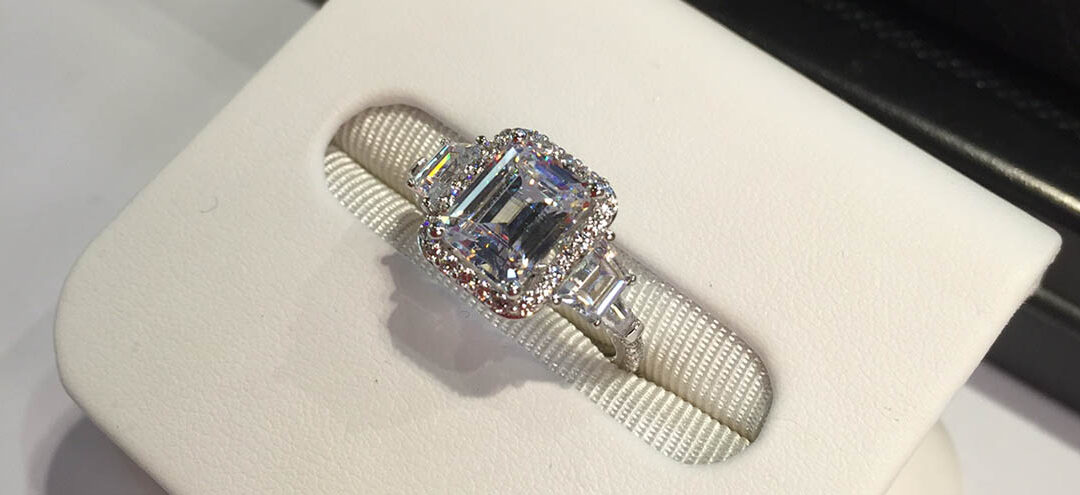The 21st century has witnessed a substantial increase in the desire of couples to upgrade gemstone-based jewelry purchased at the outset and in the early years of marriage. While upgrading generally refers to the engagement ring diamond and or mounting, it also pertains to classic diamond studs as well as necklaces of the finer Japanese Akoya cultured pearls. In the case of diamonds, upgrading generally means increasing the carat weight accompanied by some change in the quality of the stone(s). For the ring itself, upgrading refers to a complete change of design, and for pearls, upgrading refers to purchasing both larger and finer necklaces of cultured pearls.
When Upgrading Jewelry, Communication is Key
Successful change of gemstone weight/quality is best achieved through a transparent and open relationship between the seller and the client. What does this mean? If the original diamond is to be traded back to the seller, the seller should communicate its value as the discussion begins. What will the seller offer the client in trade against the purchase of a larger and possibly finer diamond? In the same way, the client should be forthright in communicating a budget. How much will the client spend, out-of-pocket, to achieve the required result?
Many jewelers and their clients are often nervous about these disclosures. At what point should the information be disclosed? Should the “truth” about the value of a diamond be retained by the jeweler until the jeweler finds out what the client wishes to do? Should the client withhold his budget requirements until he is given the trade in value of his diamond and has determined the cost to purchase the larger stone? This process is called “the silent negotiation,” where no really useful information is communicated. In the end, it simply places the jeweler and the customer as adversaries as opposed to partners, to complete a task to the benefit of both.
Both buyer and seller should acknowledge this process as a partnership at the very beginning and both should work to remove the anxiety surrounding values of gemstones and the cost of manufacturing beautiful jewelry.
The Process of Upgrading Jewelry
One interesting question is: does the value of the diamond to be returned increase as the size/quality and cost of the larger stone increases? The best answer is no, it should not increase. If the seller is an authentic diamond expert, then he/she knows exactly what that diamond will cost should he need to purchase it through normal channels from any one of hundreds of diamond cutters. If the seller chooses to offer more than his wholesale cost as the trade in value of the diamond, then it can only be because the seller’s markup on the new stone is high enough to absorb that additional value. All of a sudden, the disclosure requirement becomes less than transparent, and the buyer is left with the uncomfortable feeling of not knowing the accurate trade in value of his diamond and not knowing the authentic value of the larger stone.
Another challenge to the process is the retail replacement cost appraisal owned by the client and used to insure the diamond ring. Many clients wrongly believe they will receive this value upon trade-in. In fact, in my experience, most clients never really understand the purpose of an insurance appraisal and how the appraiser determined the value. Oddly, clients seldom ask these important questions when they have their jewelry appraised. All of this may “come out” in the search for both the best trade-in value and the best price on the new stone.
The core value in the entire process is the willingness of both parties to reveal their goals and to view the negotiation as a partnership where both buyer and seller walk away victorious.

